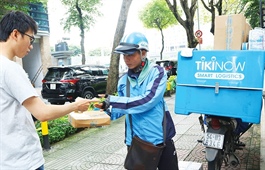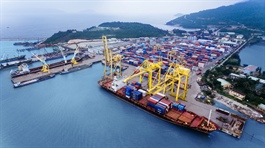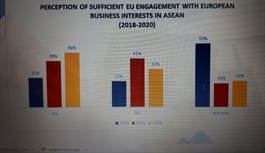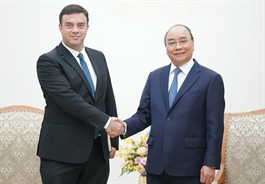Steps to advance US-Vietnam trade and investment
Steps to advance US-Vietnam trade and investment
The US-Vietnam Business Summit, titled Trusted Partners Prospering Together brought together government and industry leaders from both countries to discuss ways to promote expanded trade and investment and new opportunities to help fuel Vietnam's post-COVID-19 economic recovery.

The US-Vietnam Business Summit was held yesterday
|
The American Chamber of Commerce in Hanoi (AmCham) and the US Chamber of Commerce, in co-operation with the Vietnam Chamber of Commerce and Industry (VCCI), hosted a major conference on the future of Vietnam-US commercial relations yesterday (October 9) in Hanoi.
The business summit, meant to build on the current positive momentum in the bilateral economic relationship, also celebrated 25 years of diplomatic relations between Vietnam and the United States. The event featured in-person and virtual participation by many current and former officials from the two countries, highlighted by remarks from former US Secretaries of State John Kerry and Madeleine Albright who both talked about the importance of the commercial relations in helping the two countries strengthen their friendship and partnership.
Deputy Minister of Planning and Investment Tran Duy Dong highly appreciated the diplomatic relationship between Vietnam and the US, highlighting successful businesses and projects in Vietnam like Cargill, Coca-Cola, Pepsico, and Intel. "They are the key bricks that build the trade and investment co-operation of the two countries, and develop it sustainably," said he.
The US ranks 11th out of 138 countries and territories investing into Vietnam with more than 1,000 valid projects, and over $9.4 billion, concentrating on hotels, services, processing, and manufacturing. "In fact, US investment into the country is much bigger because a lot of projects have been implemented through third countries and some technology giants have invested into Vietnam through their partners," said Dong.
On the other hand, the US is among the top 10 countries and territories where Vietnam is investing, including 200 projects worth $750 million from the likes of Viettel, Vingroup, FPT, Vinamilk, An Phat Plastic, and Vietcombank.
The Ministry of Planning and Investment (MPI) has closely collaborated with embassies, the AmCham, US-ABC, banks, and consultant companies to promote bilateral relations with the US. "The MPI was also instrumental in the handshake with the US International Development Finance Corporation to strengthen infrastructure development," added Deputy Minister Dong, and highlighted some areas that are the strengths of the US and where Vietnam ha strong demand like renewable energy, transport, banking and finance, education and training, tourism, high technology, and high-tech agriculture.
Through dynamic growth from the very beginning, bilateral trade turnover reached $76 billion, a 170-fold growth compared to 1994. "The restructuring of global supply chains has enabled Vietnam to rank ninth (from 12th) among exporters to the US. The economies of Vietnam and the US complement each other," Vu Tien Loc, chairman of VCCI said.
While Vietnam exports seafood, cashew, textile, and footwear to the US, the US is an abundant supplier of machines, high-tech equipment, as well as equipment in aviation, telecommunications, energy, liquefied gas, and agricultural materials. Vietnam is currently the 27th largest export market and 16th trade partner of the US.
"Despite Vietnam's unsustainably large trade surplus with the United States, I am confident that the growth trend of trade and investment between our two countries will continue and can strengthen," said AmCham executive director Adam Sitkoff. "Progress on the key issues raised at today's summit will improve business conditions that strengthen the private sector, ensure economic and social development, attract additional investment, and promote prosperity here in Vietnam."
Speakers and panel participants discussed a wide range of issues, including promoting sustainable and predictable investment policies; driving growth and innovation through the digital economy; addressing Vietnam's energy development needs; navigating Asia's supply chain and manufacturing landscape in a post-COVID-19 world; working together to help Vietnamese businesses and entrepreneurs reach their potential, and global trade dynamics and the upcoming US election.



















